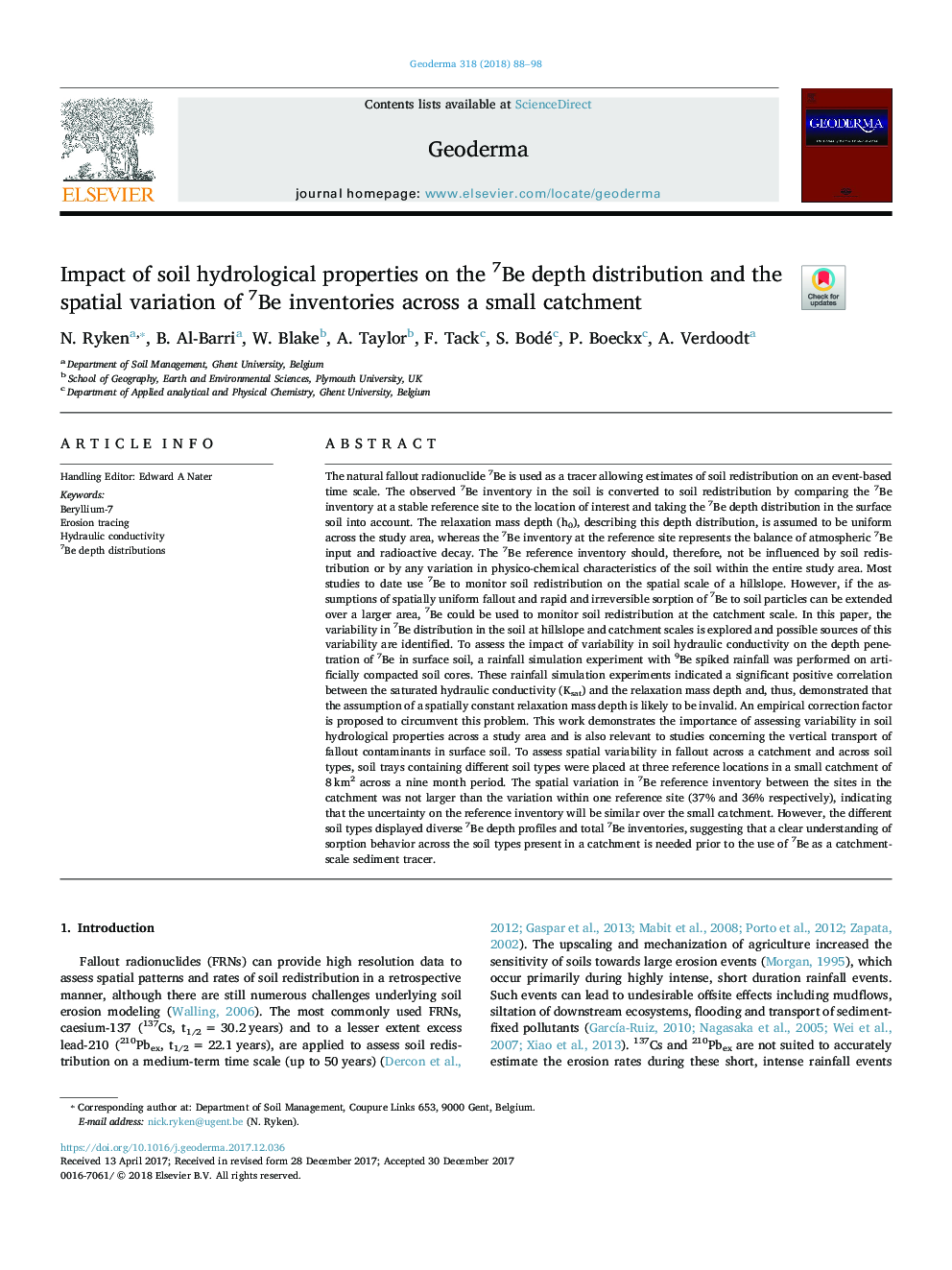| Article ID | Journal | Published Year | Pages | File Type |
|---|---|---|---|---|
| 8894186 | Geoderma | 2018 | 11 Pages |
Abstract
The natural fallout radionuclide 7Be is used as a tracer allowing estimates of soil redistribution on an event-based time scale. The observed 7Be inventory in the soil is converted to soil redistribution by comparing the 7Be inventory at a stable reference site to the location of interest and taking the 7Be depth distribution in the surface soil into account. The relaxation mass depth (h0), describing this depth distribution, is assumed to be uniform across the study area, whereas the 7Be inventory at the reference site represents the balance of atmospheric 7Be input and radioactive decay. The 7Be reference inventory should, therefore, not be influenced by soil redistribution or by any variation in physico-chemical characteristics of the soil within the entire study area. Most studies to date use 7Be to monitor soil redistribution on the spatial scale of a hillslope. However, if the assumptions of spatially uniform fallout and rapid and irreversible sorption of 7Be to soil particles can be extended over a larger area, 7Be could be used to monitor soil redistribution at the catchment scale. In this paper, the variability in 7Be distribution in the soil at hillslope and catchment scales is explored and possible sources of this variability are identified. To assess the impact of variability in soil hydraulic conductivity on the depth penetration of 7Be in surface soil, a rainfall simulation experiment with 9Be spiked rainfall was performed on artificially compacted soil cores. These rainfall simulation experiments indicated a significant positive correlation between the saturated hydraulic conductivity (Ksat) and the relaxation mass depth and, thus, demonstrated that the assumption of a spatially constant relaxation mass depth is likely to be invalid. An empirical correction factor is proposed to circumvent this problem. This work demonstrates the importance of assessing variability in soil hydrological properties across a study area and is also relevant to studies concerning the vertical transport of fallout contaminants in surface soil. To assess spatial variability in fallout across a catchment and across soil types, soil trays containing different soil types were placed at three reference locations in a small catchment of 8Â km2 across a nine month period. The spatial variation in 7Be reference inventory between the sites in the catchment was not larger than the variation within one reference site (37% and 36% respectively), indicating that the uncertainty on the reference inventory will be similar over the small catchment. However, the different soil types displayed diverse 7Be depth profiles and total 7Be inventories, suggesting that a clear understanding of sorption behavior across the soil types present in a catchment is needed prior to the use of 7Be as a catchment-scale sediment tracer.
Keywords
Related Topics
Physical Sciences and Engineering
Earth and Planetary Sciences
Earth-Surface Processes
Authors
N. Ryken, B. Al-Barri, W. Blake, A. Taylor, F. Tack, S. Bodé, P. Boeckx, A. Verdoodt,
